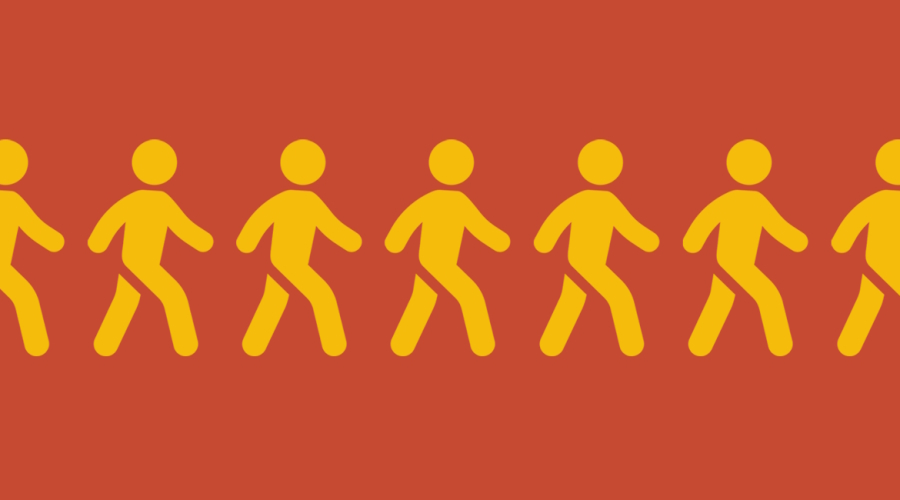Our increasingly sedentary lifestyle is a major contributor to our overall health. The proportional contribution of premature death has been categorized based on determinants of human health as follows (McGinnis et al., 2002):
- Behavioral patterns: 40%
- Genetic predisposition: 30%
- Social circumstances: 15%
- Healthcare: 10%
- Environmental exposure: 5%
Stated differently, our lifestyles and surroundings account for approximately 45% of premature death. Second only to smoking, chronic adverse health conditions exacerbated by a predominantly sedentary lifestyle (e.g., obesity, diabetes, heart disease) account for nearly twice the number of deaths in the United States than drugs, alcohol, guns, motor vehicles, and sexual behavior combined (Pilar et al., 2020).
What is active design?
We need to get moving. In response to public concerns over our increasingly less active lifestyle, the concept of “active design” has emerged in architecture and planning. Active design seeks encourage increased physical activity among occupants through a range of strategies, including:
Enhanced accessibility: The concept of “universal access” is centered around ensuring that all people – regardless of abilities – have equal access to spaces and services throughout a building or site. This requires attention to both physical environmental elements (e.g., ramps, elevators, restroom configurations) and informational access (physical and digital), which should accommodate visual, auditory, motor, and cognitive impairments.
Encourage physical movement: By integrating design features such as a prominently placed staircase, clearly demarcated walking paths with varied points of interest (e.g., views, art installations), and convenient proximity and access to public space and certain amenities, occupants may be more likely to take on increased physical activity – and benefit from the healthy outcomes.
Promote active travel: This can be accomplished by establishing facilities that encourage people to seeks alternative modes of transportation from automobiles. Such alternative modes are categorically referred to as “active travel” and can include cycling, running, walking – even emerging modes such as e-bikes, e-scooter, scooters, cargo bikes, recumbent bikes, and skateboards. Active travel can be supported through effective active travel parking, conducive infrastructure (e.g., variety of modes, access to routes and wayfinding, proper illumination, and security), suitable facilities (e.g., short-term and long-term storage options, shower and changing rooms, drying/airing provisions), maintenance and repair stations, clear signage, and future-proofing through a strategic degree of overprovisions. The notion is that these active travel options become attractive to users as more cost-effective and efficient ways to travel that contribute to improved health.
Community connectivity: Successful active design solutions must consider points of respite and destination. Strategic programmatic, spatial, and/or land-use layouts can create walkable communities and provide proximity to amenities such that the convenience of active travel results in improved human health through regular physical activity, environmental benefits through less carbon-based transportation, and increased local economic support.
Integrate biophilic design: Active design solutions will often seek to reap the human health benefits of biophilic design features, which can include direct and indirect access to natural elements, forms, and patterns. Biophilic design may utilize vegetation, water features, natural materials, daylight and views, and various other forms of sensory stimuli.
Benefit of active design
By encouraging people to adopt a more actively lifestyle and engage their communities, active design has the potential to yield several compounded benefits, including:
Improved physical and mental health: Active design directly combat the risk of chronic health conditions that stem from a predominantly sedentary lifestyle. Moreover, physical activity, access to daylight, and interactions with nature have all been shown to help improve mental health.
Positive environmental impacts: By encouraging walking and active travel, transportation-related greenhouse gas (GHG) emissions will be reduced.
Economic benefits: In addition to lower healthcare costs and increased productivity, active design promotes local activity, which results in increased commerce.
Tools to help building teams enhance active design
There are numerous design frameworks in the market that can offer building project teams a "road map" for active design, including:
ActiveScore: ActiveScore assesses, certifies, and enhances active travel facilities and services in buildings. This organization maintains an eponymous certification system can be leveraged to future-proof assets and set benchmarks for active travel standards. Learn more about ActiveScore at: activetravelscore.us
LEED: Developed by the U.S. Green Building Council, (USGBC), the Leadership in Energy and Environmental Design (LEED) rating system features a number of credits that promote dense, walkable communities, and suitable bicycle accommodations, among other aspects. Learn more about LEED at: usgbc.org/leed
Fitwel: Developed by the U.S. Centers for Disease Control and Prevention (CDC) and the General Services Administration (GSA), and operated by the Center for Active Design (CfAD), Fitwel is a certification system that evaluates the health and wellness attributes of buildings and communities. The system includes a number of strategies that directly align with active design principles related to walkability, proximity to non-automobile transit, bicycle facilities, and enhanced accessibility. Learn more about Fitwel at: fitwel.or
WELL: Developed by the International WELL Building Institute (IWBI), the WELL Building Standard is a performance-based system for measuring, certifying, and monitoring features of a building project that impact human health and wellness, including air, water, nourishment, light, fitness, comfort, and mind. Active design principles are embedded throughout the standard. Learn more about the WELL Building Standard at: wellcertified.com
A key asset of a a comprehensive health building strategy
Active design should stand as a cornerstone for any project taking a comprehensive approach to the concept of "healthy buildings." In addition to rigorous systems to ensure clean air, proper ventilation, purified water, and super thermal, lighting, and acoustic comfort, a healthy building should be one that encourages people to get up and move.

